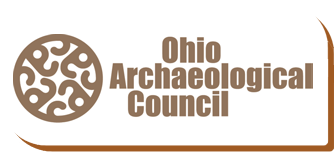A Preliminary Examination of Freshwater Bivalves at the Late Prehistoric Hahn Site, Near Cincinnati, Ohio
Robert A. Genheimer and Stanley E. Hedeen
Abstract
Freshwater bivalves recovered from two trash-filled storage pits excavated at the Late Prehistoric Hahn site near Cincinnati, Ohio are analyzed. The nature of these two deposits suggest that they were probably single episode discards related to post processing of mussels as a food resource. A total of 26 species was identified for the combined feature assemblages. While small to medium-large species were collected, five individual species of small, medium, and medium-large mussels accounted for nearly three-quarters of the mussel sample MNI. A comparison to recently surveyed mussel populations illustrates that mussel diversity in the Little Miami River near Hahn has declined significantly historically, with those species sensitive to sedimentation and turbidity either found in low numbers or extirpated. Despite the large number of bivalves and bivalve fragments recovered from Hahn only a minor percentage exhibit cultural modification, with the majority of modifications visible on valve fragments. A dozen shell hoes from Hahn are also identified to species where possible. Existing data suggests that mussel soft tissue is low in caloric content and nutritional value. Nevertheless, the low return in nutrition may have been offset by easy access to large numbers of individuals.
Early Historic American Indian Testimony Concerning The Ancient Earthworks Of Eastern North America
Bradley T. Lepper
Abstract
This study reports the results of a review and analysis of the historically documented views of American Indians relating to the mounds and enclosures of eastern North America with a focus on the Ohio valley. The earliest and most reliable sources indicate the American Indian tribes who occupied this region in the historic era had no traditions elucidating who built the mounds or why they had been built. The most common explanation given for the presence of these structures was that they were ancient forts. This interpretation may have been influenced by the idea once prevalent among European Americans, or it may have been one source of that popular, but largely erroneous conception. There is no consistent evidence that American Indians in eastern North America uniformly regarded the earthworks as sacred or religiously significant. American Indian testimony provides no reliable support for any particular claims of cultural affiliation between any modern/historic tribe and any prehistoric earthwork in this region.
An Exploratory Analysis Of Diachronic Settlement Patterns In Central Ohio
Kevin C. Nolan
Abstract
The Ohio Archaeological Inventory (OAI) is the state database of officially recorded archaeological sites. There are tens of thousands of records. The database is far from complete, but this still represents the largest compila-tion of site-based records. The potential for region-level analysis is vast. I undertake a first-pass, exploratory analysis of all recorded prehistoric sites in eight central Ohio counties. There are definite temporal patterns in the data that complement the fine-scale narratives derived from the more detailed, larger-scale data of intensive survey and excavation. The clearest patterns are associated with the transition from a mobile hunting and gather-ing lifeway to a more sedentary horticultural pattern from the Archaic into the Woodland. The OAI is a valuable research tool that holds much potential to elucidate patterns in the prehistory of the state.
